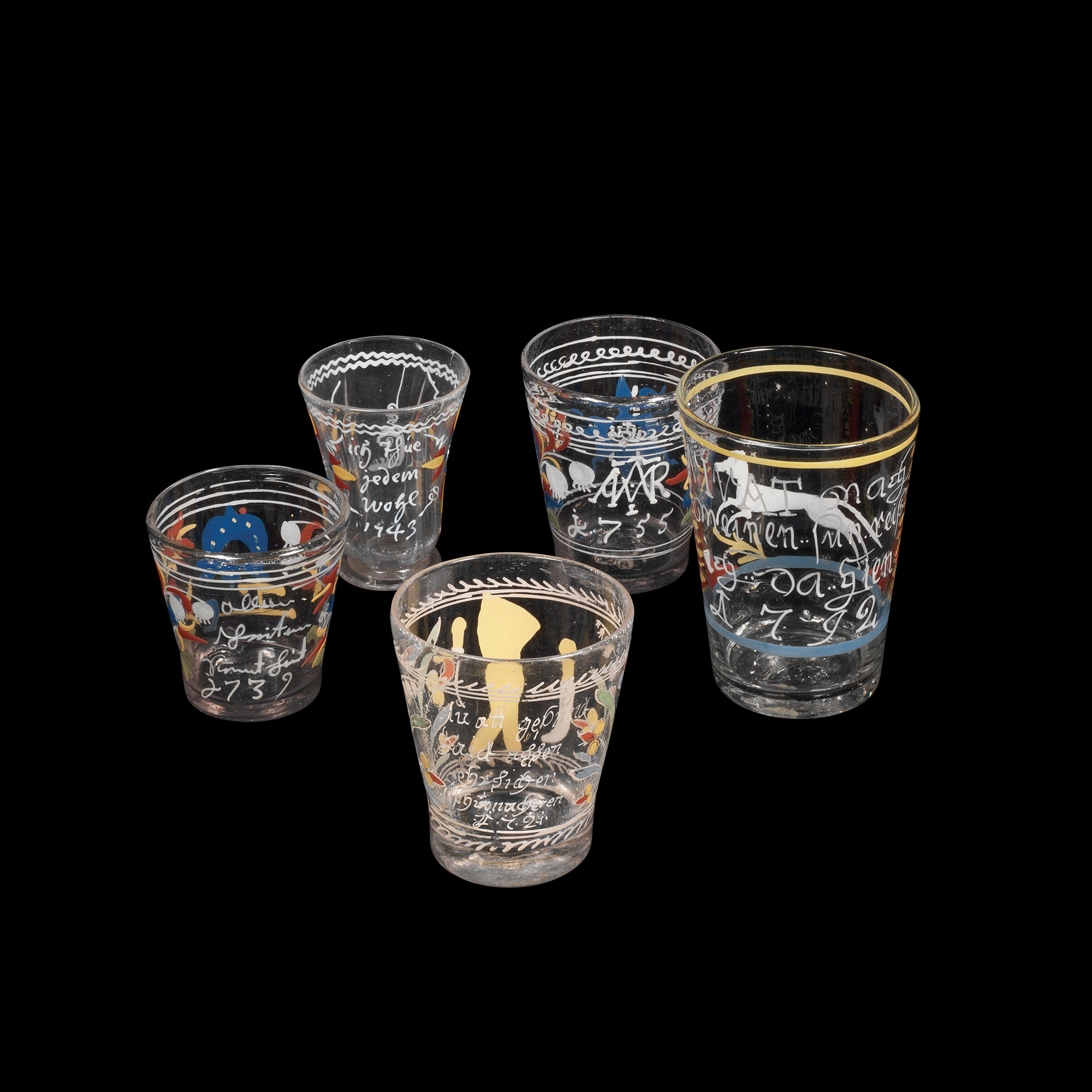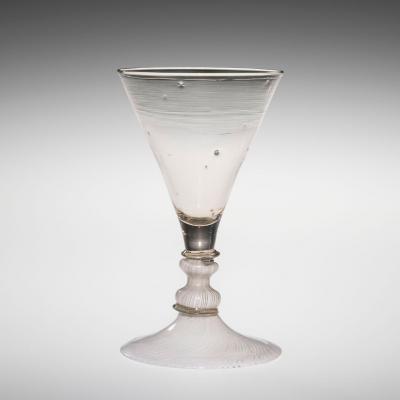If, as now appears to be the case, the Swiss Goblet was indeed made in Switzerland, it joins a group of locally made glasses that includes a large number of enameled glasses (Fig. 24). The decoration of these vessels, known among glass historians as “peasant glasses,” nearly always includes a date that is, without exception, in the 18th century. Peasant glasses have two features in common with the Swiss Goblet group: the glass is often of exceptional clarity, and the bottoms of the vessels are noticeably—and evidently intentionally—much thicker than the walls.
Nine Venetian-Style Glassworking Centers
Switzerland

Group of dated polychrome enameled “peasant” glasses. Switzerland (perhaps exported from Germany or Bohemia), clockwise from top, left: 1743, 1755, 1792, 1721, and 1739. H. (tallest) 8 cm. The Corning Museum of Glass (79.3.734, gift of The Ruth Bryan Strauss Memorial Foundation; 75.3.142, gift of John B. Strater, Charles Helme Strater Jr., and Mrs. Margaret S. Robinson in memory of Charles Helme and Alice B. Strater; 61.3.175, gift of Minnie L. Schuelein; and 75.3.149 and 75.3.144, gifts of John B. Strater, Charles Helme Strater Jr., and Mrs. Margaret S. Robinson in memory of Charles Helme and Alice B. Strater). Photo: The Corning Museum of Glass.
Goblet
Recent reconsideration of the origin of this goblet and its many parallels in private and public collections exemplifies how a long-established and -accepted provenance can, on solid grounds, be revised. Although these glasses have long been identified as having been made in the Low Countries in the 17th century, new archaeological evidence suggests that they are more likely to have been produced in one or more glasshouses in Switzerland in the early 18th century.29
Two characteristic features of this group are well outside the norm for Venetian glass: (1) the greater thickness of the bottom of the cups, and (2) the greater wall thickness of the glass on which the filigrana canes reside.30
